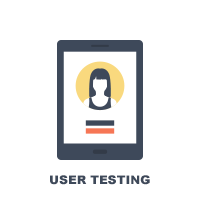Understanding How User Experience Designers Think And Work

Perhaps you’re a well-seasoned UX Designer, a kick-ass multidisciplinary designer or even a new designer who’s looking to get into the field of UX (User-Experience), you’ve travelled across the vast interwebs to learn more about UX and you know how reading essay-like materials can be very time-consuming. Helpful, yes, but sometimes you just want quick points so you can jot it into your moleskin notebook or save to Pocket and refer back to at times of need.
For a while now, I’ve been reading up a lot on UX and I found all sorts of UX methodologies and articles written by well-known designers and speakers.
I was curious to know what the average everyday designer’s process is like, explained in the simplest way possible so I decided to put together a survey on Typeform.
This is a quick summary of the results of the survey. You can find the full survey at the end of this post.
What’s the Goal?
To seek out and draw similarities between designers’ design process and workflow to gain a better understanding of how they think and the most commonly-used UX methodologies.





Top 4 Picks For The Design Process Breakdown:




Based on the results received, we can see the most common structure in the UX design process is Discovery (Research), Prototyping, Iterating based on feedback and User-Testing.
Discovery:

Discovery, also known as Research is the most important step to starting any project. Just like how you wouldn’t buy a house without doing any research on the area and market price-value, you wouldn’t go about designing something without understanding the product and the intended users inside-out.
Ways to go about doing this: Understanding the business and project goals and requirements, research competitors and the market, researching target users and building personas and use-case scenarios.
Prototyping:

Prototyping allows you to communicate your ideas and flow quickly and gather feedback efficiently. By building a prototype, you can quickly weed out the approaches that don’t work to focus on the ones that do.
Great Prototyping Tools:
http://www.invisionapp.com/
https://www.uxpin.com/
https://marvelapp.com/
For more, check out this link
Iterating:

This process saves time,money and lots of headache. By iterating early and constantly, the product is tested and evaluated repeatedly at different stages of design to eliminate usability flaws before the product is designed, developed and launched.
Consider Incorporating Sprints:
By incorporating sprints into the workflow, problems and solutions can be discussed and iterated by stake holders early.
User Testing:

Usability testing is a technique used to help discover problems from a user’s perspective. Finding someone who’s not part of the design process to test out a product is the best way to understanding how user-friendly the product truly is, and knowing which parts need to be iterated on.
Some methods of User Testing are:
A/B Testing, Intercept Surveys and Card Sorting.
For a more complete list, check out this link
This post was put together in hopes of providing clear and quick points to the design process of User Experience. I hope this post provides you with a little clarity and insight into how our fellow designers work.
The Survey’s other results (UX methodologies followed, tips for new designers looking to get into UX) are included in the full survey’s results here.
*Much thanks to Adam Worrall for proof-reading and providing feedback!
Thank you for reading, you’re awesome.
You can find me on twitter and dribbble. Say hi, I’m friendly!

